Located just steps from Piazza Navona, Chiostro del Bramante was commissioned in 1500 by Cardinal Oliviero Carafa as part of the adjacent church of Santa Maria della Pace. Designed by Donato Bramante, who would later work on the designs for St. Peter’s Basilica, the cloister marked one of his earliest works in Rome. Chiostro del Bramante is celebrated for its perfect proportions and harmonious design, embodying the ideals of Renaissance architecture. The square layout is framed by two levels of arcaded porticos supported by slender travertine columns
Over the centuries, it underwent various restorations to preserve its architectural integrity while adapting it for contemporary uses. Since 1997, the space has functioned as a cultural center.
During the "Crazy: Madness in Contemporary Art" exhibition, the installation "Passi" by Italian artist Alfredo Pirri was featured. This installation covered the courtyard floor with reflective mirrors that would crack under the weight of visitors, creating a dynamic and interactive experience. The installation featured an intricate system designed to capture rainwater.
The art installation "Poured Staircase" by British artist Ian Davenport is a striking contemporary intervention, located along the walls of the staircase leading to the upper floors. Created using his signature "poured painting" technique, Davenport's installation features vibrant streams of colorful paint that cascade down the vertical surfaces, evoking a sense of fluidity and movement.
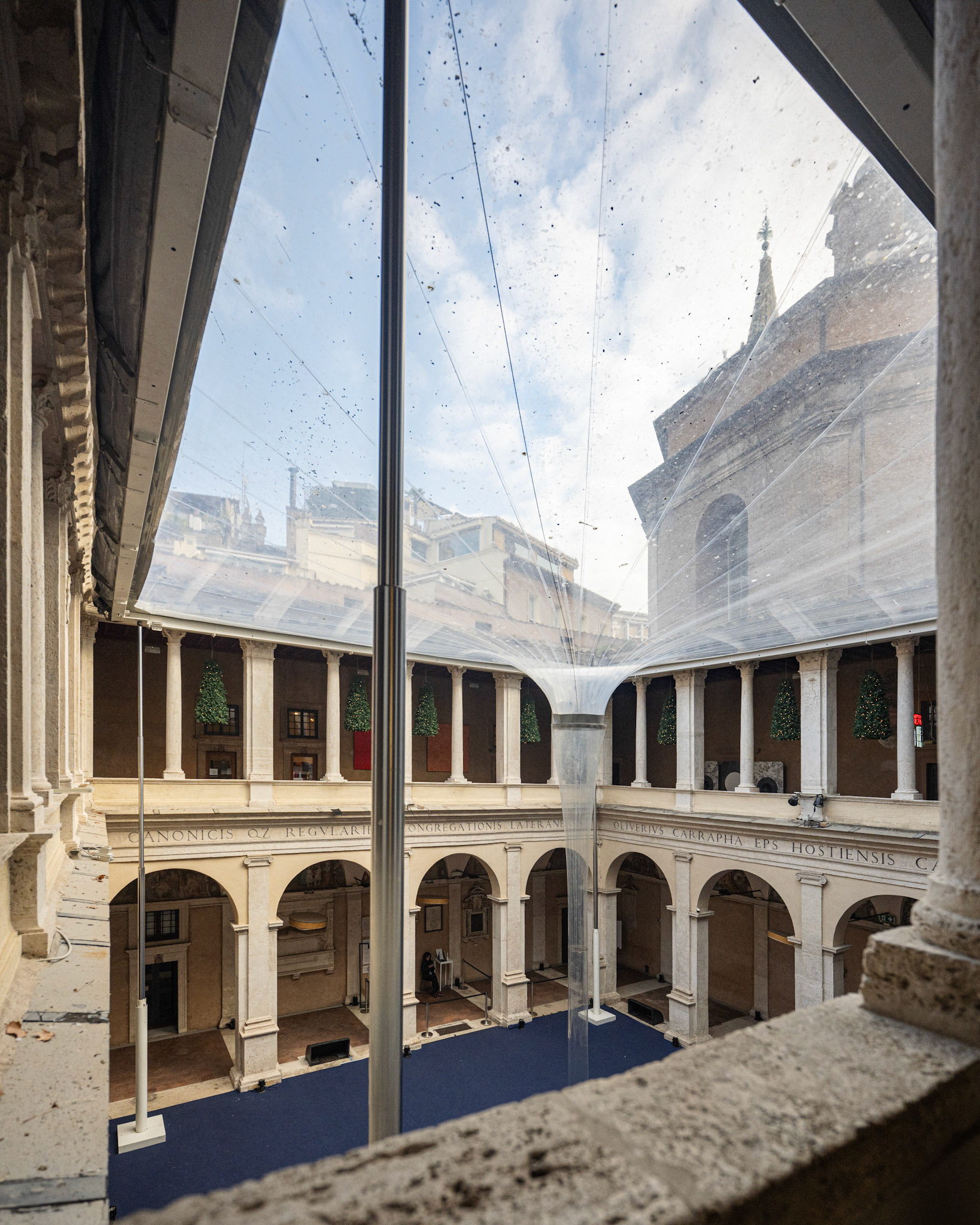
Chiostro del Bramante - courtyard
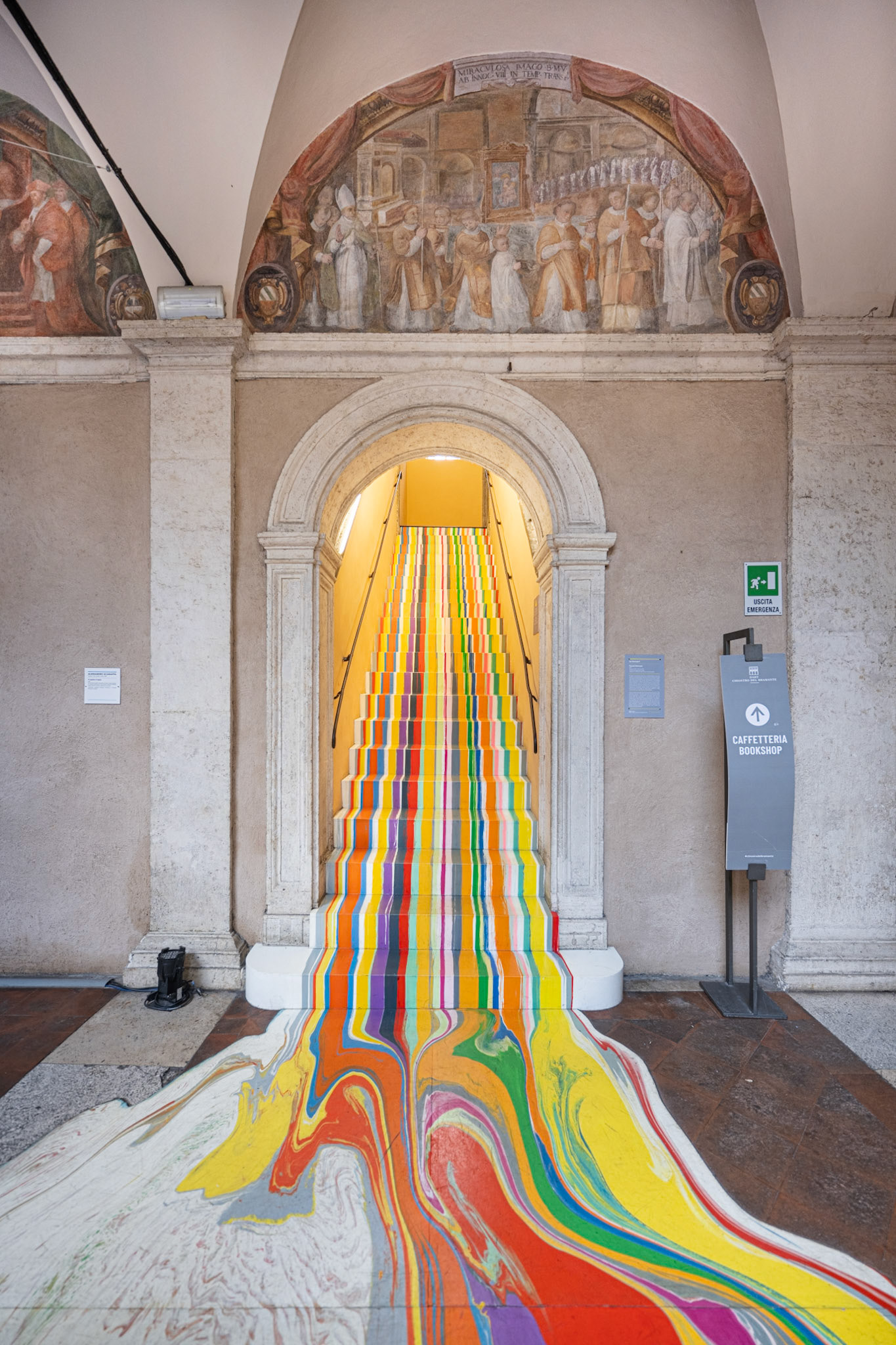
"Poured Staircase" by British artist Ian Davenport
"A Pleasure Palace" is an art installation created by Fallen Fruit, an art collective founded in Los Angeles in 2004 by artists David Burns and Austin Young. This immersive installation transforms the Cafeteria at the Chiostro del Bramante into a whimsical, surreal space, enveloping visitors in a kaleidoscope of colors and patterns inspired by historical themes. The richly decorated walls and furnishings evoke a sense of extravagance and joy, connecting the contemporary art world with the Renaissance ideals of beauty and harmony that define the Chiostro itself.
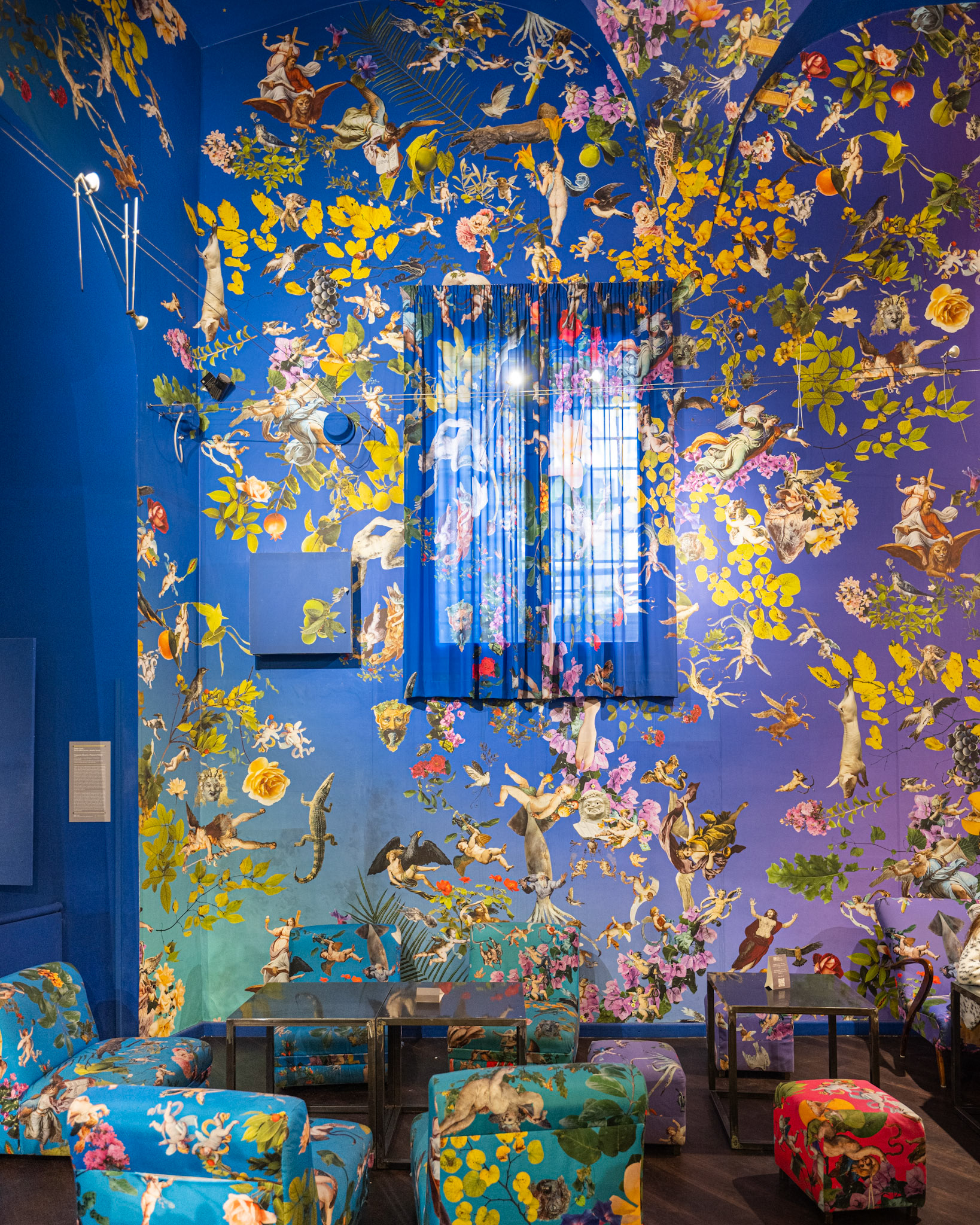
Chiostro cafeteria with art installation "A Pleasure Palace"
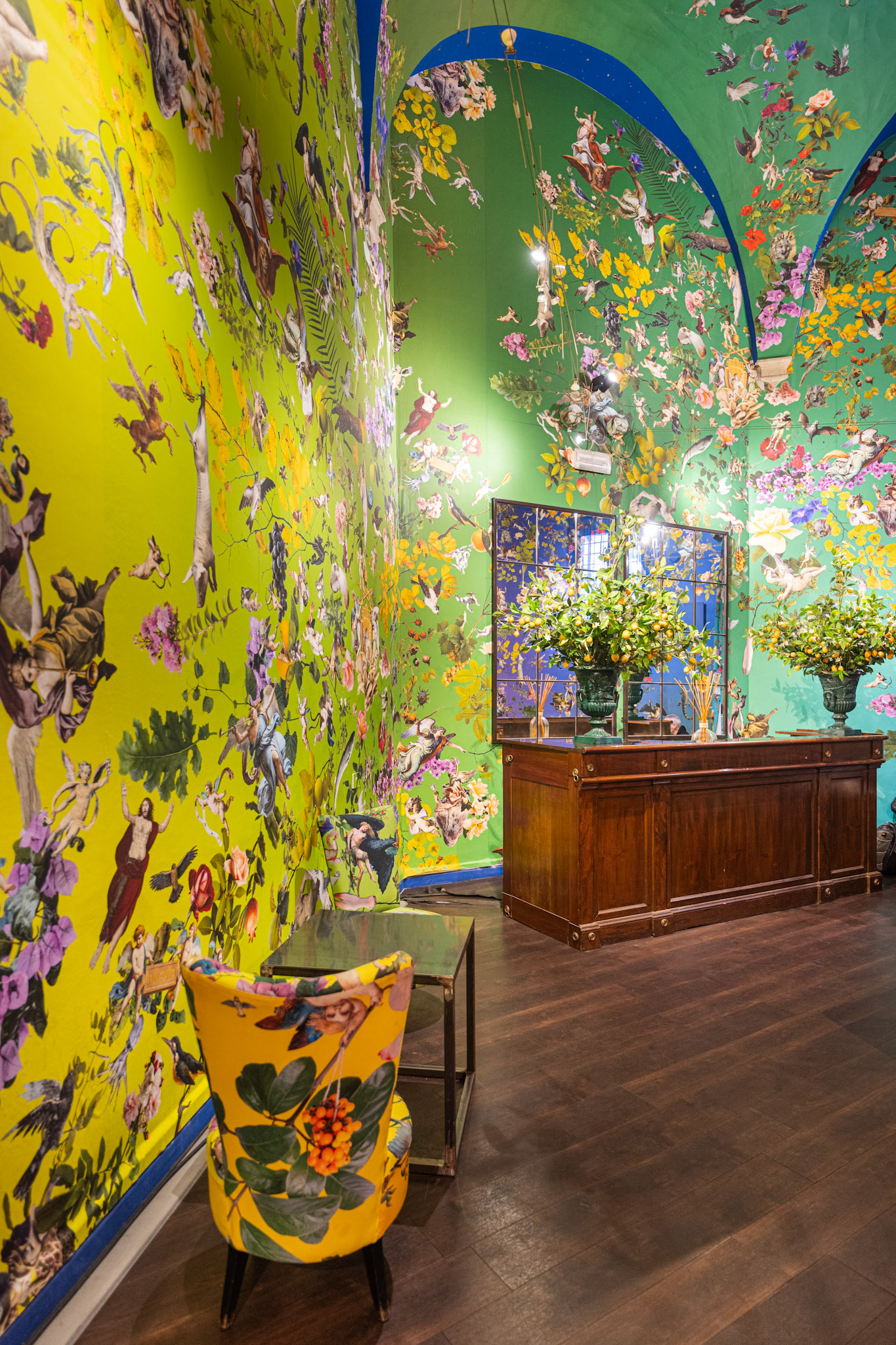
Chiostro cafeteria with art installation "A Pleasure Palace"
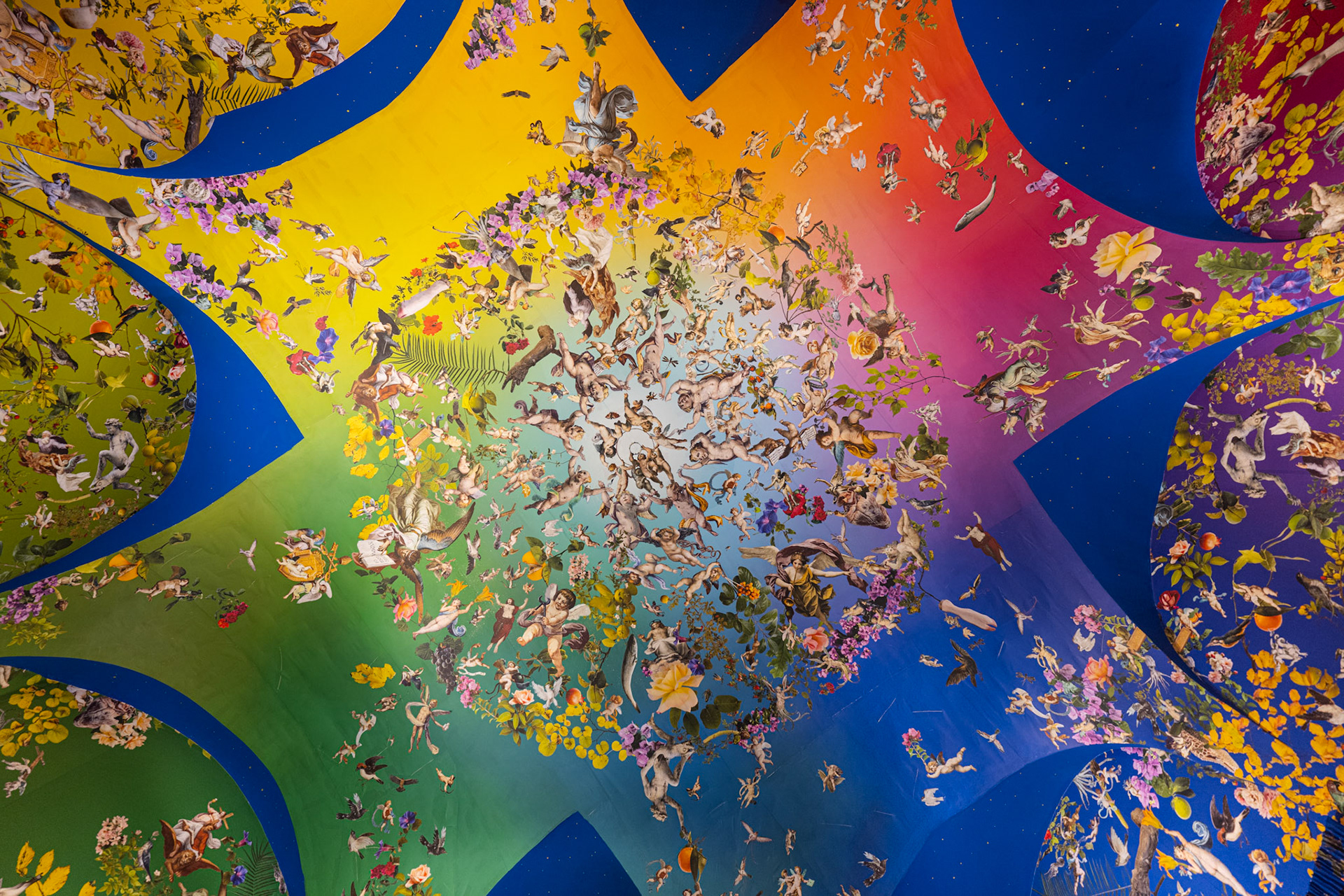
cafeteria ceiling
You may also like